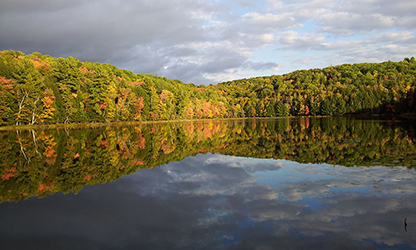Prepare Your Cottage For Winter
Now that the Muskoka cottage season is over, it’s time to shut it down for another year. Preparing your cottage for its long winter’s nap need not be a major chore, but there are some crucial steps you should take to avoid any surprises while you’re away. Here are 13 simple steps to put your cottage to bed for winter.
1 Shut off the water supply, drain the pipes and hot water tank, and leave taps open to allow them to “breathe”. Toilets should be turned off and flushed, then any remaining water bailed out. Alternatively, pour antifreeze into the bowl to protect the lines; be sure to use RV (pink) antifreeze or another environmentally friendly type.
2 Unplug all electrical appliances and electronic devices. Many modern electric and electronic devices continue to draw a small amount of power even when turned off; over a winter, it can add up to an expense you don’t need.
3 Turn off baseboard electric heaters. They are a leading cause of cottage fires. Or if the cottage has central heating, turn it down or off.
4 Clean out the fireplace and close the damper flue.
5 Thoroughly clean the kitchen and remove any food. During the winter, rodents and even bears can sniff it out, causing a lot of damage.
6 If you can, remove valuables, such as TVs and stereos, and take them down to the city. If any valuable items will be left at the cottage, make sure windows are covered so that thieves can’t see in and be tempted.
7 Any items that are normally left outside, such as a gas barbecue, should be removed and stored offsite or in a secure location onsite, such as a locked garage or basement.
8 Take photos of the cottage, inside and out, as well as any valuables you’re leaving there over the winter. Record serial numbers of devices that have them. These will prove invaluable if you need to call the insurance company.
9 Make sure that any minor repairs, such as painting bare areas, stopping up holes and resealing cracks around openings, are done before the first freeze. These jobs can get a lot worse if left to winter’s ravages.
10 Install a cover over the chimney opening to prevent raccoons or other furry tenants from moving in. Inspect the exterior of the cottage, looking for other small openings that could be co-opted for an animal home – including under the deck, at the foundation, or under eaves.
11 Arrange to have a local snow removal company come at least once over the winter to remove snow and ice build-up from the roof. Even a relatively small load, such as a foot or so, can become dangerously heavy if there’s a period of rain followed by a freeze-up. Put boxes over vents or skylights to protect them from snow loads or accidental damage by an over eager guy with a shovel.
12 Consider hiring the same company to maintain the road and walkways around the cottage over winter, so there is access in case of an emergency such as a fire. Keeping the paths and driveway shoveled also makes the cottage look more lived-in, which is a security advantage.
13 Hire someone or ask a friend who lives up there year-round to check on the cottage periodically to make sure all is well, if you can’t get up there yourself. If something unfortunate has happened, from a break-in, to a fire, to a roof cave-in, the sooner you are made aware and can deal with it, the better.


